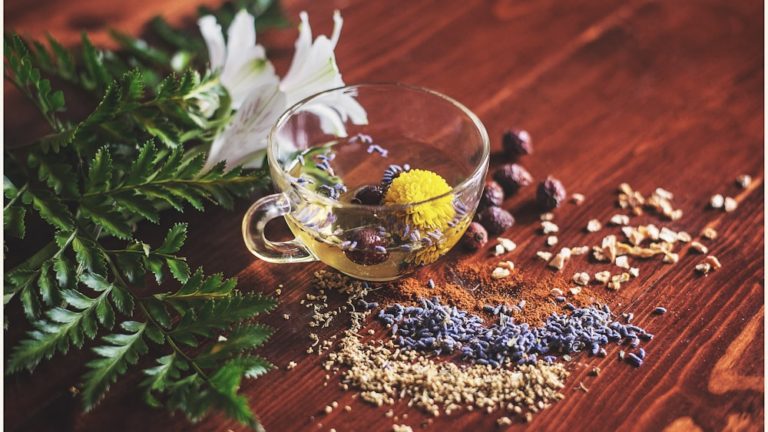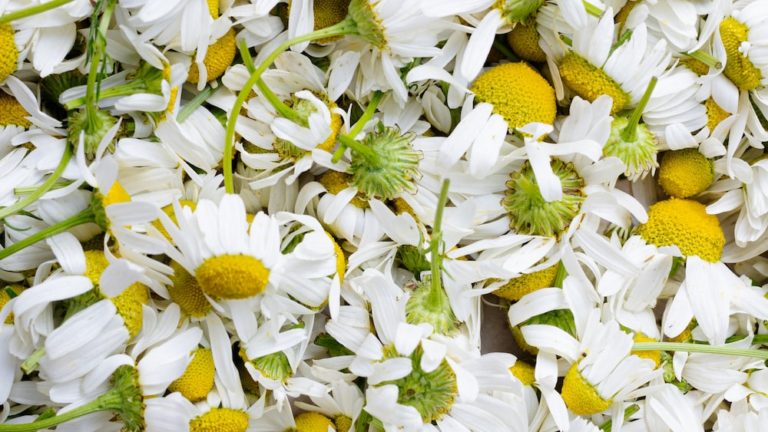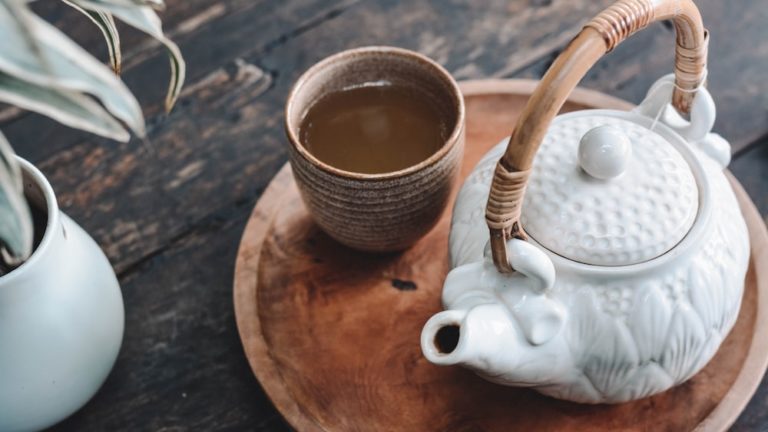Mastering Kukicha Tea Preparation: Expert Brewing Guide

Mastering Kukicha Tea Preparation: Expert Brewing Guide
Ah, kukicha tea preparation – not your average cup of tea, and that’s exactly why we love it! Here, we’re setting off on a journey through the art and subtle science behind brewing this Japanese masterpiece. Imagine for a moment you’re a tea sommelier (fancy, right?), your tools: a kettle, a pot, and that precious kukicha tea. This isn’t just about dunking a tea bag in hot water; oh no, it’s akin to performing alchemy.
Key Points:
- Kukicha tea is a unique Japanese green tea made from twigs, stems, and leaves.
- It has a distinct flavor profile due to its composition and is rich in nutrients like catechins.
- Brewing kukicha tea requires gentle handling with water temperature around 80-85°C and steeping for 1-3 minutes.
- Kukicha tea offers health benefits such as antioxidants, vitamins, and minerals, with lower caffeine content compared to other teas.
- Pairing kukicha tea with food enhances the tea-drinking experience, complementing both savory and sweet dishes.
- Kukicha tea can be reinfused multiple times, offering subtle changes in flavor with each infusion.
- High-quality kukicha tea can be purchased from specialty tea shops focusing on Japanese teas.
Kukicha, with its distinct flavor profile, stemming (pun intended) from a unique blend of twigs, stems, and leaves, stands apart in the world of teas. It’s a testament to Japanese craftsmanship and a reminder that great things often come from the most unexpected sources. Here, we’ll unveil the secrets behind selecting, brewing, and savoring kukicha like a pro.
So, whether you’re a tea aficionado looking to broaden your horizons or a health-conscious individual eager to explore the benefits of this green tea, buckle up! We’re about to dive deep into everything kukicha – from its roots in Japanese tea ceremonies to how it can enhance your daily wellness routine.
Unveiling Kukicha Tea
In the vast ocean of teas that the world has to offer, kukicha tea floats on the surface like a rare pearl. Its uniqueness lies not just in its taste but in its composition and origin. Kukicha isn’t your garden-variety green tea; it’s a symphony of twigs, stems, and the occasional leaf, each playing a crucial role in crafting its distinct aroma and flavor.
The Essence of Kukicha
Kukicha, often referred to as twig tea, encapsulates the very essence of sustainability and ingenuity in Japanese tea culture. Traditionally, it was made from the parts of the tea plant that were left over after producing more prestigious teas like sencha and gyokuro. But don’t let its humble origins fool you; kukicha is a teapot hero in its own right. Its mild yet nuanced flavor profile is a testament to the idea that nothing should go to waste, and sometimes, the most underestimated ingredients yield the most delightful results.
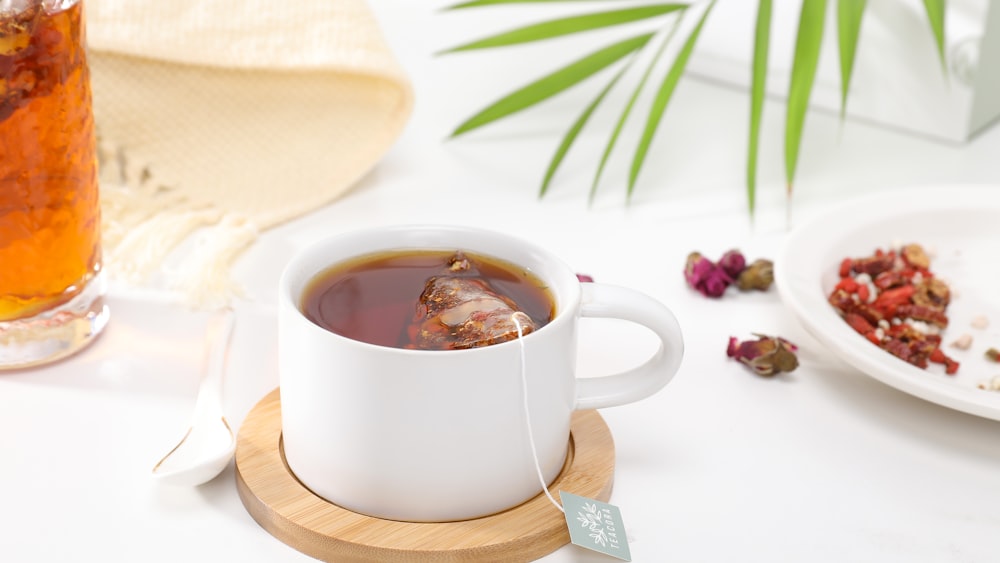
Kukicha tea exemplifies the beauty of utilizing every part of the tea plant and showcases how underestimated elements can offer delightful results.
The Unique Composition of Kukicha
The characteristic that sets kukicha apart from other teas is, indisputably, its unique composition. While most teas focus on the leaves, kukicha embraces the whole plant – twigs, stems, and all. This not only gives it a distinct flavor but also means it’s packed with nutrients often overlooked in other green teas.
In fact, the stems and twigs store nutrients differently than leaves, leading to a tea that’s surprisingly low in caffeine but high in other beneficial compounds like catechins. It’s a brilliant example of Japanese efficiency; nothing goes to waste, and everything has a purpose. The difference in texture and composition between the twigs and leaves also results in a tea with layers of flavor – a hint of sweetness nestled within a refreshing earthiness.
The Journey of Kukicha Tea
The journey of kukicha tea from farm to cup is a fascinating tale of transformation. It’s a story that takes us through the meticulous care and craftsmanship of Japanese tea farmers, turning what was once considered a byproduct into a cherished brew.
From Harvest to Cup: The Production Process
Kukicha‘s journey begins in the verdant tea fields of Japan, where attention to detail and a deep respect for nature guide the harvesting process. Following the harvest, the leaves, twigs, and stems are carefully separated based on size and type. This is where the magic starts to happen.
The twigs and stems undergo a unique process of steaming, drying, and aging that enhances their flavor. Some varieties of kukicha are even roasted, adding a nutty depth to their taste profile. It’s a meticulous production process that requires patience and precision, overseen by tea masters whose skills have been honed over generations. This painstaking care ensures that each cup of kukicha offers a complex and satisfying experience, reflecting the craftsmanship and tradition of Japanese tea-making.
Kukicha tea undergoes a meticulous production process that includes steaming, drying, and aging to enhance its flavor, resulting in a complex and satisfying experience reflecting Japanese tea-making craftsmanship and tradition.
The Different Varieties of Kukicha Tea
Exploring the varieties of kukicha tea is like embarking on a culinary journey through Japan. From the lightly steamed freshness of Kukicha Karigane, made with stems from high-quality sencha and gyokuro teas, to the rich, toasted warmth of Hojicha Kukicha, every type offers a unique tasting experience.
Each variety reflects the climate, soil, and production techniques of its region, making kukicha not just a tea but a taste of Japanese terroir. It’s a fascinating exploration of flavors and aromas that showcases the versatility and depth of kukicha as a tea type.
The Art of Preparing Kukicha Tea
Mastering the art of preparing kukicha tea is like learning a new language – it opens up a world of subtle nuances, deep flavors, and refreshing aromas that can transform your tea-drinking experience. Whether you’re a seasoned tea connoisseur or a curious novice, there’s always something new to discover in the ritual of kukicha preparation.
Selecting Your Kukicha Tea
When it comes to selecting your kukicha tea, think of yourself as an art curator – looking for that perfect piece that speaks to you. Not all kukicha is created equal, and the key to a great cup lies in finding high-quality twigs and stems.
Look for kukicha with a fresh, vibrant green color and a clean, sweet aroma – signs of care in processing and freshness. Options range from teas with leaves for a fuller body to those consisting solely of stems for a lighter, more delicate cup. The origin and production details provided by the retailer can offer insights into the tea’s quality and flavor profile, ensuring you pick the perfect match for your palate.
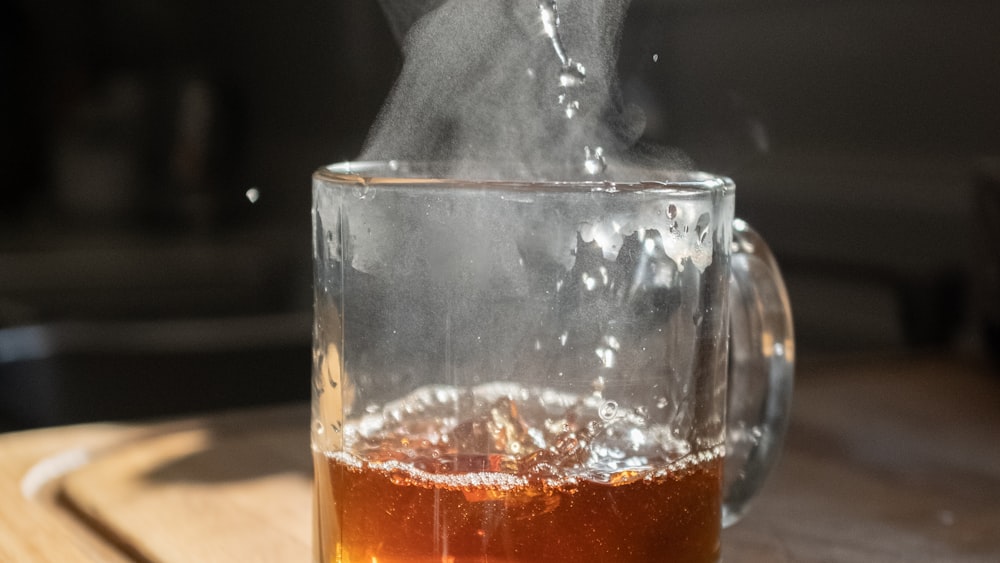
Selecting high-quality kukicha tea involves considering factors such as color, aroma, body, and production details to find the perfect match for your palate.
Step-by-Step Brewing Guide
Now, brewing kukicha tea – it’s not rocket science, but there’s an art to it that can elevate your cup to stellar levels. Here’s a universal guide to getting it just right:
- Heat your water to about 80-85°C. Remember, kukicha is delicate. Treat it like a light fabric that needs a gentle wash – too hot, and you’ll spoil the flavor.
- Measure out about one teaspoon of kukicha per cup of water. It might not look like much, but those twigs are deceivingly powerful.
- Let the tea steep for 1-3 minutes, depending on how strong you like your tea. Peek into the pot; when the color turns a lovely pale green, it’s time to whisper a small thank you to the tea gods and pour.
Tips for a Perfect Cup Every Time
Ever wonder why your kukicha tea sometimes tastes like the ambrosia of gods and other times more like dishwater? Fear not! Here are a couple of golden rules that can turn you into a kukicha-brewing wizard:
- Water quality is key. Imagine kukicha as a highbrow guest at a party; you wouldn’t offer them tap water, would you? Use filtered or spring water for the best result.
- Mind the temperature and steeping time. Kukicha is a gentle soul that doesn’t take well to harsh treatments. Too hot or too long, and it’ll retaliate by turning your cup into a bitter revenge.
Water quality and temperature play crucial roles in brewing the perfect cup of kukicha tea.
The Health Benefits of Kukicha Tea
Kukicha tea isn’t just a treat for your taste buds; it’s also a boon for your health. This unassuming brew, made from stems and twigs, is rich in nutrients and antioxidants, offering a range of health benefits from improved digestion to enhanced well-being. Whether you’re sipping for pleasure or health, kukicha has a surprise in every cup.
Nutritional Profile of Kukicha Tea
Kukicha tea, often referred to as twig tea, boasts a distinctive mix of nutrients that sets it apart from more widely known green teas. Rich in antioxidants, particularly catechins, kukicha provides a healthful elixir that champions the body’s defense against free radicals. Not to be overlooked, it contains a wealth of vitamins and minerals, including Vitamin C, calcium, and iron, knitting a tapestry of wellness benefits into every cup.
Unlike its green tea cousins, kukicha harnesses its unique nutrient profile from both leaves and stems of the tea plant. This duality not only contributes to kukicha’s nuanced flavor but also to its nutritional richness. Studies emphasize the importance of catechin, an antioxidant present in green teas, for its role in promoting heart health and potentially reducing the risk of certain cancers. [1] [2] [3] [4]
Moreover, kukicha tea is lower in caffeine compared to other teas. This makes it an excellent option for those looking to lessen their caffeine consumption while still enjoying a healthful, antioxidative brew. Its gentle stimulation, combined with a treasure trove of nutrients, positions kukicha as not just a beverage but a tonic for wellbeing.
How Kukicha Tea Enhances Your Well-being
Kukicha tea doesn’t just slip quietly into your daily routine; it strides in, laden with benefits that extend well beyond the palate. Its unique composition supports both physical and mental well-being in a symphony of subtlety that is as nurturing as it is invigorating. Firstly, the antioxidant properties of kukicha, highlighted by its catechin content, contribute to cellular health and longevity, reducing oxidative stress and potentially warding off chronic diseases.
On the mental front, the modest caffeine content in kukicha provides a gentle uplift, enhancing alertness without the jittery side-effects associated with stronger teas or coffee. This balancing act makes it an ideal companion for meditation or a mindful afternoon break, marrying the tranquil culture of tea drinking with tangible health advantages. [5]
Furthermore, kukicha’s alkalizing effect on the body helps maintain a healthy pH balance, promoting digestion and fostering an environment less conducive to inflammation. Couple this with its role in supporting immune function through a high vitamin C content, and it’s clear that kukicha’s contributions to well-being are both broad and profound, making it a worthy addition to anyone’s wellness arsenal.
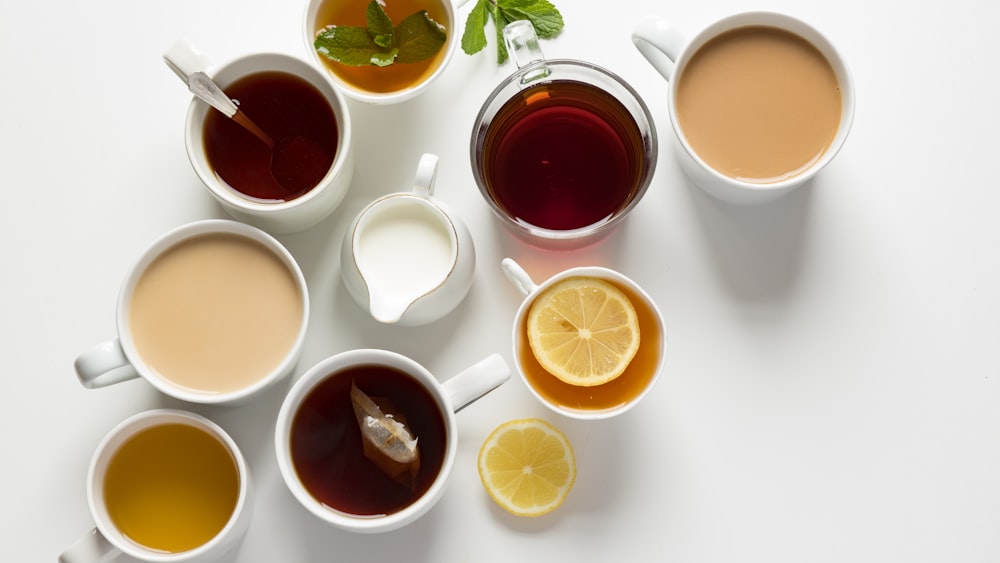
Enhancing Your Kukicha Tea Experience
To truly embrace the kukicha tea experience, consider not just the brewing but the broader context of your tea ritual. This involves everything from the selection of tea to the ambiance you cultivate for your tea time. Think of it as setting the stage for a performance, where every detail, from the cup’s warmth in your hands to the tea’s aroma wafting through the room, contributes to the overall experience. It’s about transforming a simple action into an immersive moment, elevating your tea time from a mere beverage break to a nourishing ritual for both body and mind.
Pairing Ideas for Kukicha Tea
Pairing kukicha tea with food is an art that, when done right, can elevate your tea experience to new heights. Firstly, consider the umami-rich aspect of kukicha, which harmonizes beautifully with both sushi and sashimi; the tea’s understated bitterness accentuates the freshness of the fish. On the sweet side, matcha-infused desserts or mochi provide a delightful contrast to kukicha’s earthy notes, creating a dance of flavors that play off each other exquisitely.
For those who prefer savory, grilled vegetables or a light soup can complement kukicha’s vegetal undertones. The smoky element of grilled asparagus or zucchini, paired with the clean, crisp taste of kukicha, makes for a refreshingly wholesome combination. These pairing ideas aim not just to complement the tea but to enhance the overall gastronomic journey, adding layers of enjoyment to your kukicha tea ritual.
Creative Recipes Using Kukicha Tea
Incorporating kukicha into your culinary repertoire goes beyond mere brewing; it involves infusing its essence into inventive dishes that speak of sophistication and surprise. An intriguing venture is making a kukicha-based broth; imagine a gentle yet flavorful base for noodle soups or a risotto, where every spoonful whispers tales of Japan’s tea culture. The nuanced flavors of kukicha tea bring a notable depth to these dishes, marrying tradition with innovation.
Another inventive twist is kukicha ice cream. Blending the earthy tones of the tea with the creamy sweetness of ice cream results in an unexpectedly delightful dessert that pays homage to kukicha’s versatility. These recipes not only favor the palate but also celebrate the cultural and culinary significance of kukicha, inviting an exploration of taste that is as enriching as it is entertaining.
Infusing kukicha tea into inventive dishes adds sophistication and surprise, celebrating the cultural and culinary significance of this versatile ingredient.
FAQs
1. How does the taste of Kukicha tea compare to other green teas?
The taste of Kukicha tea is distinctively more nuanced and milder than other Japanese green teas, offering a unique blend of slightly sweet and nutty flavors with a hint of underlying bitterness. This contrast is largely due to its inclusion of twigs and stems, in addition to leaves, affecting both its taste and aroma in a pleasantly mild manner.
2. Can Kukicha tea be reinfused?
Yes, Kukicha tea can be reinfused, often multiple times. Each reinfusion brings out subtle changes in flavor, offering a new dimension to the tea experience while making the most of the twigs and leaves.
3. Is Kukicha tea suitable for those sensitive to caffeine?
Yes, Kukicha tea is suitable for those sensitive to caffeine, as it is lower in caffeine content compared to other green teas. This makes it a great option for enjoying the benefits of green tea without the strong caffeine presence.
4. Where can I purchase high-quality Kukicha tea?
High-quality Kukicha tea can be purchased at specialty tea shops, both online and in-store, that focus on Japanese teas. These retailers often provide a selection of kukicha options, allowing you to explore different grades and flavors.
Conclusion
In this article, we’ve journeyed through the world of kukicha, uncovering its nutritional benefits, marveling at its unique taste, and exploring ways to enhance the tea drinking experience. By now, it’s clear that kukicha tea preparation is not just about brewing a cup of tea; it’s about embracing a culture, indulging in a healthful ritual, and, most importantly, savoring every sip with mindfulness and appreciation.
As you venture into the world of kukicha, remember that each cup is an opportunity to connect with a tradition that has been refined over centuries in Japan, providing both physical nourishment and a serene moment of escape from the hustle and bustle of daily life.
So, here’s to your next cup of kukicha – may it bring you peace, health, and a sparkle of joy to lighten your day. Until next time, happy brewing and drinking, and remember, there’s a whole universe within each leaf waiting to be explored. Cheers, Zoe

